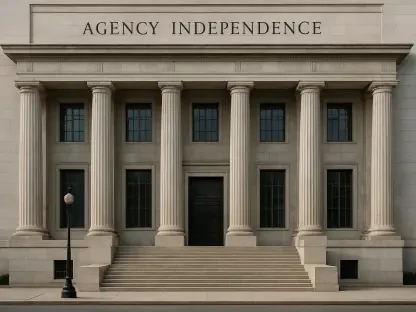The recent U.S. Supreme Court decision on the proof standard for establishing exemptions from the Fair Labor Standards Act (FLSA) minimum wage and overtime requirements is a pivotal moment for employers and employees alike. This landmark ruling emerged from the case of E.M.D. Sales, Inc. v. Carrera, making significant waves in labor law interpretation. By clarifying that employers only need to meet the “preponderance of evidence” standard, the Court has set a critical precedent in how FLSA exemption cases will be evaluated going forward, potentially impacting numerous employment disputes.
Background and Case Overview
Three sales representatives initiated a legal battle against their employer, E.M.D. Sales, Inc., arguing that they were wrongfully denied overtime wages. E.M.D. contended that these employees were exempt from overtime under the FLSA’s outside sales exemption. An initial trial court ruling favored the employees, relying on a rigorous “clear and convincing evidence” standard. The Fourth Circuit Court of Appeals upheld this decision, leading E.M.D. Sales, Inc. to elevate the matter to the Supreme Court in pursuit of a more favorable ruling.
The Supreme Court’s involvement stemmed from a clear need to resolve the discord between different federal courts regarding the appropriate standard of proof. The case highlighted a significant legal question: whether a heightened standard of proof was necessary for FLSA exemption cases. Ultimately, the Supreme Court opted to settle this legal ambiguity, thereby providing nationwide clarity on the standard of proof required in such cases.
The Supreme Court’s Ruling
In a unanimous ruling, the Supreme Court declared that the “preponderance of evidence” standard should be applied in cases concerning FLSA exemptions, aligning with the standard used in the majority of civil cases. Justice Brett Kavanaugh articulated that the heightened “clear and convincing evidence” standard is reserved for exceptional circumstances, typically demanded by specific statutes, constitutional provisions, or instances involving coercive government action. The Court’s decision underscored that these unique situations were not present in disputes concerning FLSA exemptions.
Importantly, the Supreme Court did not rule on whether the sales representatives fell under the FLSA’s outside sales exemption. Instead, it remanded the case to the lower courts to adjudicate with the appropriate proof standard. This move stressed the necessity of a consistent and accessible standard, making it simpler for employers to substantiate claims for FLSA exemptions without facing disproportionately high evidentiary burdens.
Implications for Employers
The ruling provides employers with significant procedural clarity and reinforces the “preponderance of evidence” standard, which is notably less onerous than requiring “clear and convincing evidence.” This decision brings federal court practices into alignment and relieves employers from the atypically high burdens imposed by the Fourth Circuit. Despite this relaxation, employers must not become complacent and must exercise meticulous care in classifying employees to remain compliant with FLSA regulations.
Proper classification of employment roles remains crucial, as misclassifications can result in substantial financial repercussions. Employers are advised to conduct regular audits, document all role evaluations comprehensively, and ensure that classifications align with current job responsibilities. Robust documentation and proactive assessments are essential for defending FLSA exemption claims and preventing costly legal disputes.
Expert Insights and Recommendations
Legal professionals have weighed in on the Supreme Court’s decision, offering insights into how employers should navigate this new judicial guideline. Ryan W. Jaziri, an authority in labor and employment law, stresses the importance of employers remaining vigilant and not misinterpreting this decision as a relaxation of FLSA compliance requirements. He emphasizes that the ruling should serve as a catalyst for ongoing diligence in maintaining lawful employment practices and valid employee classifications.
Additionally, Jack Thaler, another respected expert in the field, advises employers to continuously update their employee handbooks and policies. He highlights that staying abreast of evolving employment laws is essential for mitigating risks and avoiding potential legal issues. Employee roles and job descriptions should be regularly reviewed and updated to reflect any changes in duties, ensuring ongoing compliance with FLSA guidelines.
Future Considerations and Takeaways
The recent ruling by the U.S. Supreme Court on the standard of proof necessary for establishing exemptions from the Fair Labor Standards Act (FLSA) regulations regarding minimum wage and overtime is a crucial development for both employers and employees. This influential decision stemmed from the case of E.M.D. Sales, Inc. v. Carrera and has significantly impacted the interpretation of labor laws. By determining that employers only need to meet the “preponderance of evidence” criterion, the Court has established an essential precedent in the evaluation of FLSA exemption cases. This change is bound to affect a multitude of employment disputes moving forward, providing a clearer framework for how these cases are assessed. This landmark decision will likely lead to more predictable outcomes for both parties involved in employment lawsuits, prompting closer attention from legal experts and possibly influencing future legislative amendments to labor law.









